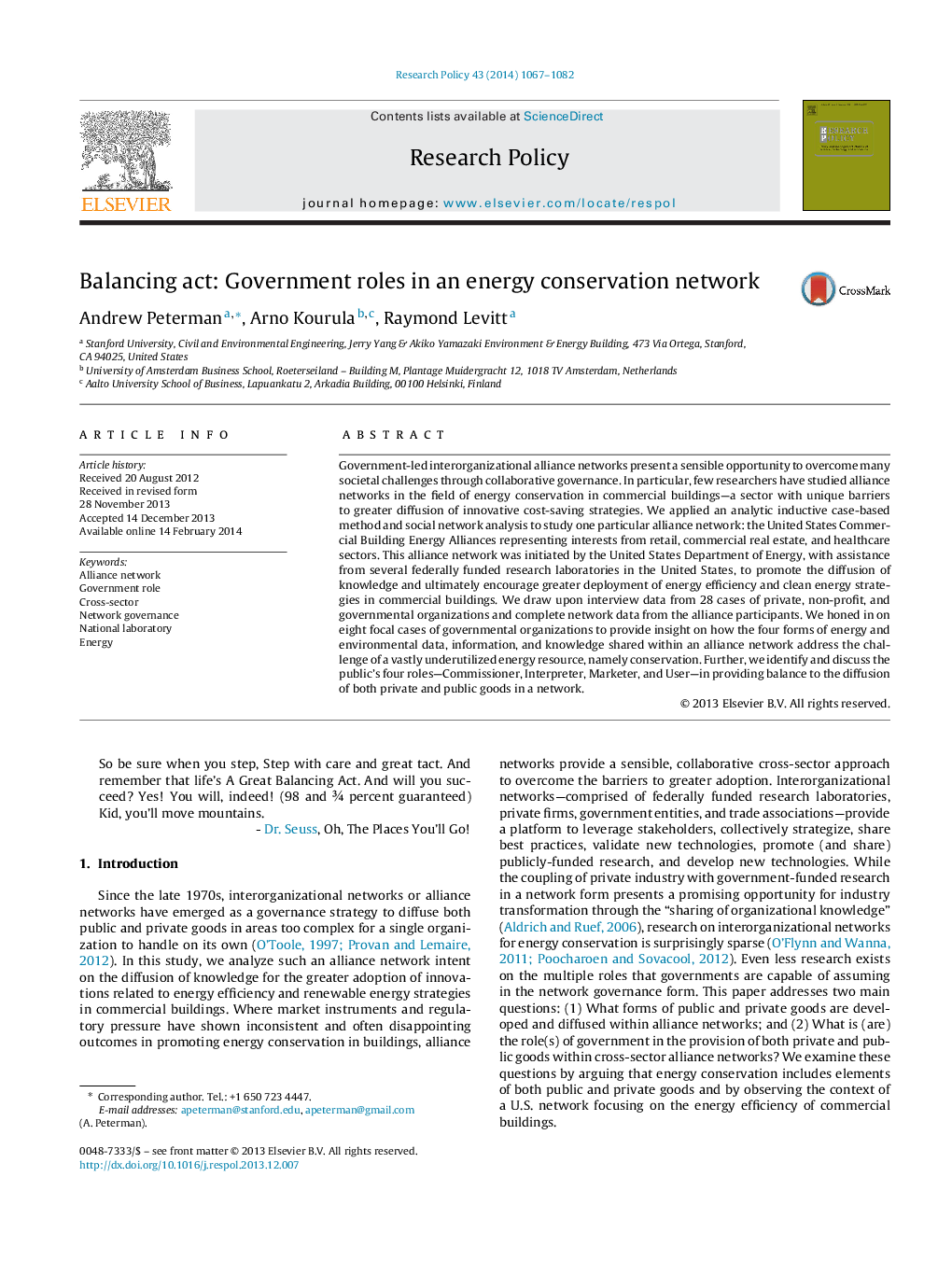| Article ID | Journal | Published Year | Pages | File Type |
|---|---|---|---|---|
| 10482964 | Research Policy | 2014 | 16 Pages |
Abstract
Government-led interorganizational alliance networks present a sensible opportunity to overcome many societal challenges through collaborative governance. In particular, few researchers have studied alliance networks in the field of energy conservation in commercial buildings-a sector with unique barriers to greater diffusion of innovative cost-saving strategies. We applied an analytic inductive case-based method and social network analysis to study one particular alliance network: the United States Commercial Building Energy Alliances representing interests from retail, commercial real estate, and healthcare sectors. This alliance network was initiated by the United States Department of Energy, with assistance from several federally funded research laboratories in the United States, to promote the diffusion of knowledge and ultimately encourage greater deployment of energy efficiency and clean energy strategies in commercial buildings. We draw upon interview data from 28 cases of private, non-profit, and governmental organizations and complete network data from the alliance participants. We honed in on eight focal cases of governmental organizations to provide insight on how the four forms of energy and environmental data, information, and knowledge shared within an alliance network address the challenge of a vastly underutilized energy resource, namely conservation. Further, we identify and discuss the public's four roles-Commissioner, Interpreter, Marketer, and User-in providing balance to the diffusion of both private and public goods in a network.
Keywords
Related Topics
Social Sciences and Humanities
Business, Management and Accounting
Business and International Management
Authors
Andrew Peterman, Arno Kourula, Raymond Levitt,
